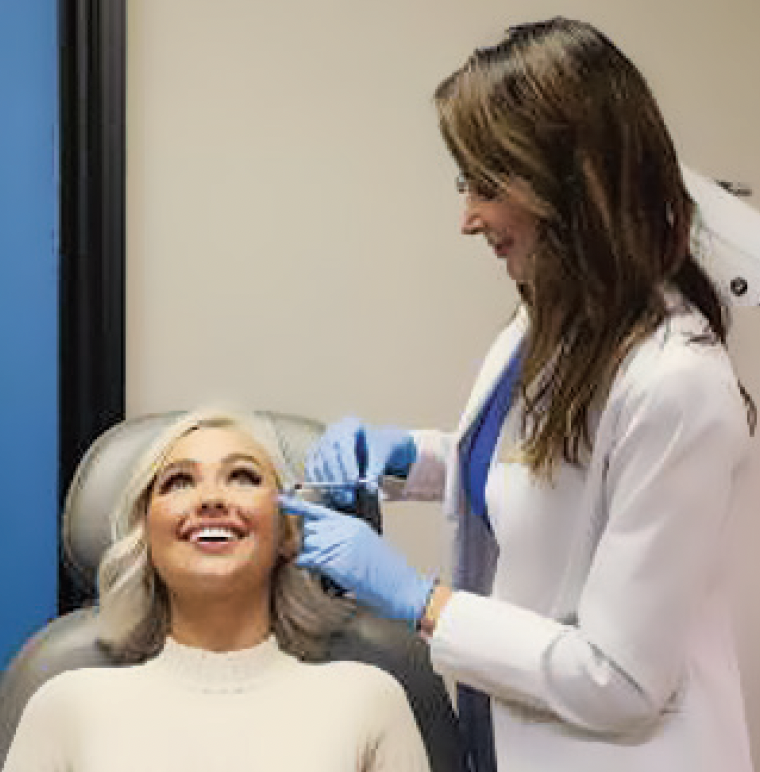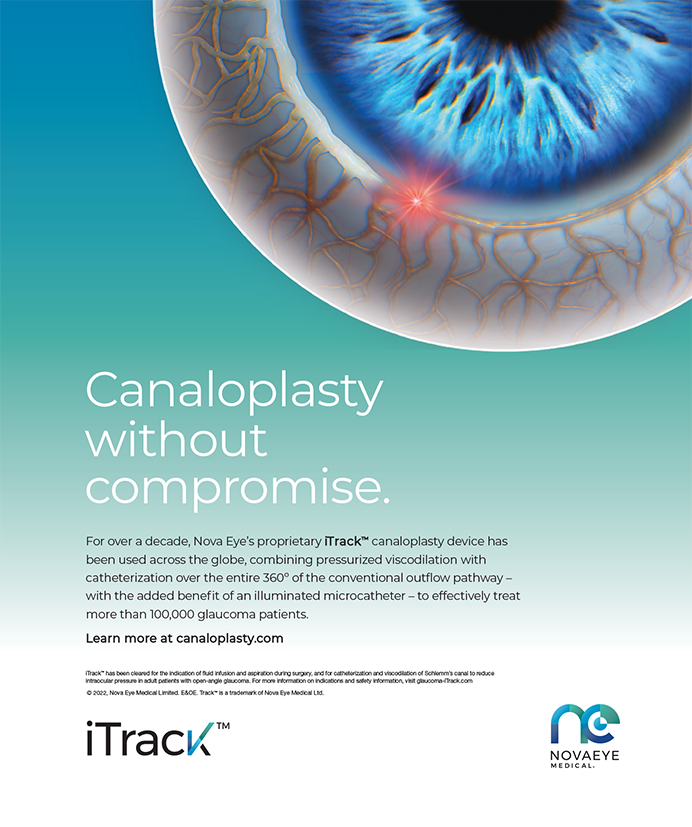
Long days of fighting with insurance companies and pharmacies coupled with declining reimbursement for doctors' highly skilled services are prompting a growing number of them to turn to aesthetic services as a means of professional and financial relief. Ophthalmologists long ago ceded most aesthetic procedures to plastic surgeons and dermatologists. Ophthalmologists, however, are uniquely prepared to offer the skills and knowledge needed for aesthetic practice. Not only are the eye and its surrounding structures the focal point of the face, but they are also the most complex structurally and functionally.
The practice of aesthetics is technically less complex and more cash-based than cataract surgery. Aesthetics is nevertheless a business to be managed, and business factors such as return on investment (ROI) heavily influence a practice’s success.
A CLOSER LOOK AT ROI
Investment cost and ROI hinge on the delivery of results, capital equipment and lease expenses, reliability, and consumables. The secondary market for a product must also be considered. Can it be resold or repaired, or must it be thrown away?
ROI is not simply the profit made on a given procedure. It is also the value that a procedure brings to the practice and, more importantly, to the patient. Good medicine is ultimately good business.
CHOOSING PRODUCTS THAT PROVIDE VALUE
Asking yourself four simple questions before purchasing a product can help ensure that you choose products that provide value to your patients consistently.
Does it work? Unlike with pharmaceutical products, many of the marketing claims for aesthetics are not supported by data. For example, a marginally useful procedure can easily emerge as a popular trend on TikTok. Moreover, many products perform similarly and deliver only incremental results. One key to success in aesthetics is not to end up with a boneyard of expensive gadgets that fell short of expectations.
Before I make a purchase, I insist on an in-office demo. I use each product on myself and long-time patients who will give me honest feedback. I also seek the advice of trusted colleagues, industry representatives, and representatives of competing companies to develop a full understanding of a product.
It is probably the cataract surgeon in me who insists on nearly immediate, significantly noticeable results from my aesthetic offerings. A product I am considering incorporating in my practice should be significantly better than my current offerings. If the initial ROI is 15% or 50% but the product does not actually work, the procedure will die on the vine and may take your practice with it.
Who else can perform this service? I generally recommend eschewing products and services that can be performed by professionals with less training or fewer skills easily to avoid the appearance of a low-end practice. The first exception to this rule is a practice that employs aestheticians or nurses as extenders to perform midrange procedures. Facials, photofacials, and microneedling are logical offerings in these practices, and such services involve minimal investment and disposable costs.
The second exception is the ubiquitous injectable onabotulinumtoxinA (Botox Cosmetic, Allergan). In my experience, this offering is typically a loss leader or a breakeven proposition at best, but I value its potential to lead patients to consider other procedures and injectables (Figure 1) with more favorable ROIs such as deoxycholic acid injection 10 mg/mL (Kybella, Allergan) for neck and jowl sculpting.

Figure 1. Dr. Toyos performs an injection.
Courtesy of Mary Phelps
Does the product involve the use of disposables? If so, how much do they cost per use? Minimizing the expense of disposables is key to maximizing ROI.
How does the product fit into my current offerings? Does it cannibalize something else already in use? Does it fill a niche or gap in the practice?
Let’s look at an example. My practice bought a body sculpting machine recently because most of our technology centered on facial procedures. I am cautious about offering too many products or services—even skincare for that matter—that target the same goals, but adding a body sculpting machine provided the practice with the potential to hit another niche market. Having too many choices in the same genre, however, can leave patients unsure of how to make the best decision.
PROVEN WINNERS
The following five offerings have proven highly valuable to my practice.
No. 1: Laser resurfacing. After people reach 35 years of age, injectables often are no longer adequate to address skin laxity. A laser resurfacing machine can noninvasively reduce wrinkles and scarring; even out pigment; and perform upper and lower eye lifts, face lifts, and neck lifts (Figure at outset).

Dr. Toyos performs a laser resurfacing treatment.
Many machines are available, but my favorite is a fractional CO2 laser (Mixto SX, Lasering USA). This workhorse requires no disposables.
No. 2: Intense pulsed light therapy. I began offering intense pulsed light (IPL) as a treatment for dry eye disease, but I have expanded my use of IPL to full facial treatments. I use IPL successfully to treat early chalazions, acne, redness from laser therapy, hyperpigmentation, small varicose veins, and to smooth out uneven fillers performed by another provider. I have even used IPL for hair removal in select individuals.
No. 3: Eyelid surgery. Unless a patient has serious medical issues such as cardiovascular risk factors, unstable medical conditions, or severe sleep apnea, I now perform all eyelid procedures in the office. This has cut down on overhead, improved patient convenience, and increased patient volume during the COVID-19 pandemic. The required investment in instrumentation was minimal.
Many of my patients do not want to wait until their insurance will cover eyelid surgery, and they often elect to undergo surgery on all four lids and/or concurrent laser resurfacing to achieve a more significant makeover.
No. 4: Follicular unit excision. Shortly before the COVID-19 pandemic, my practice purchased a follicular unit excision (FUE) machine (SmartGraft, Vision Medical; Figure 2). FUE is an in-office method of hair transplantation that can also be used for eyebrows and eyelashes. FUE does not generate a linear scar, and it produces natural-looking results. Further, it is a same-day surgical procedure. My practice recouped our investment in equipment and disposables after only a handful of cases.

Figure 2. Dr. Toyos performs a SmartGraft procedure for hair transplantation. It can also be used for eyebrows and eyelashes.
No. 5: Breast and butt lifts. It was a smart business move for my practice to share office space with a plastic surgeon specializing in breast and butt lifts. He operates in our full-service in-office OR when it is not otherwise in use. The addition has resulted in mutual referrals, and it has attracted patients to our clinic who might not have found us otherwise. Moreover, virtually no investment was required because the plastic surgeon brought his own staff and equipment to our OR.
CONCLUSION
Entering the field of aesthetics can be a welcome break from a punishing payer mix and the hurdles in traditional medicine. A competitive market, however, means that business decisions must be well thought out before implementation. Wise investments can benefit not just the practice but also patients.




